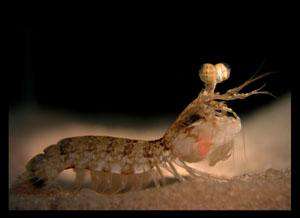
We study the visual physiology of invertebrates, especially of marine and estuarine crustaceans. Most of my recent work has been with the mantis shrimps, or stomatopods, a unique group of tropical crustaceans that have extremely complicated behavior and perhaps the most unusual eyes ever evolved. I am working with their color vision systems (they have up to 16 spectral channels), their photic environments, their systems of color communication, the dynamics of their photoreceptor cells, and their ocular movements and control systems. In recent years, we have initiated a study of the molecular genetics of their opsins, the proteins that underlie the detection of light. We want to learn how the photoreceptors evolved and how their visual proteins are specialized for color vision and for seeing the polarized-light signals that many species of mantis shrimps produce.

Members of my research group are also concerned with how animals have the animals with which we share the world have evolved visual systems specialized for their environmental and ecological requirements. Our lab motto is “If it has eyes, we can study it!” In the last 10 years, we have published papers on vision in squids, butterflies, fiddler crabs, cuttlefish, primates, dolphins, orioles, reef fishes, sponges, poison-dart frogs, fireflies, octopus, deep-sea crabs, whooping cranes, and (of course) mantis shrimp, and the list goes on . . .
Past Members

Michael Bok
MS, Applied Molecular Biology, 2007
PhD, Biological Sciences, 2013
Alexander Cheroske
PhD, Biological Sciences, 2004
Chuan-Chin Chiao
PhD, Biological Sciences, 2000
Tsyr-Huei “Short” Chiou
PhD, Biological Sciences, 2008
Alice Chou
PhD, Biological Sciences
 Brian Dalton
Brian Dalton
PhD, Biological Sciences, 2013
 Mary Donohue (Willard)
Mary Donohue (Willard)
PhD, Biological Sciences, 2018
 Kathyrn Feller
Kathyrn Feller
PhD, Biological Sciences, 2014
 Alexandra Kingston
Alexandra Kingston
PhD, Biological Sciences, 2015
Chan Lin, PhD
Post-doc
Rickesh Patel
PhD, Biological Sciences





